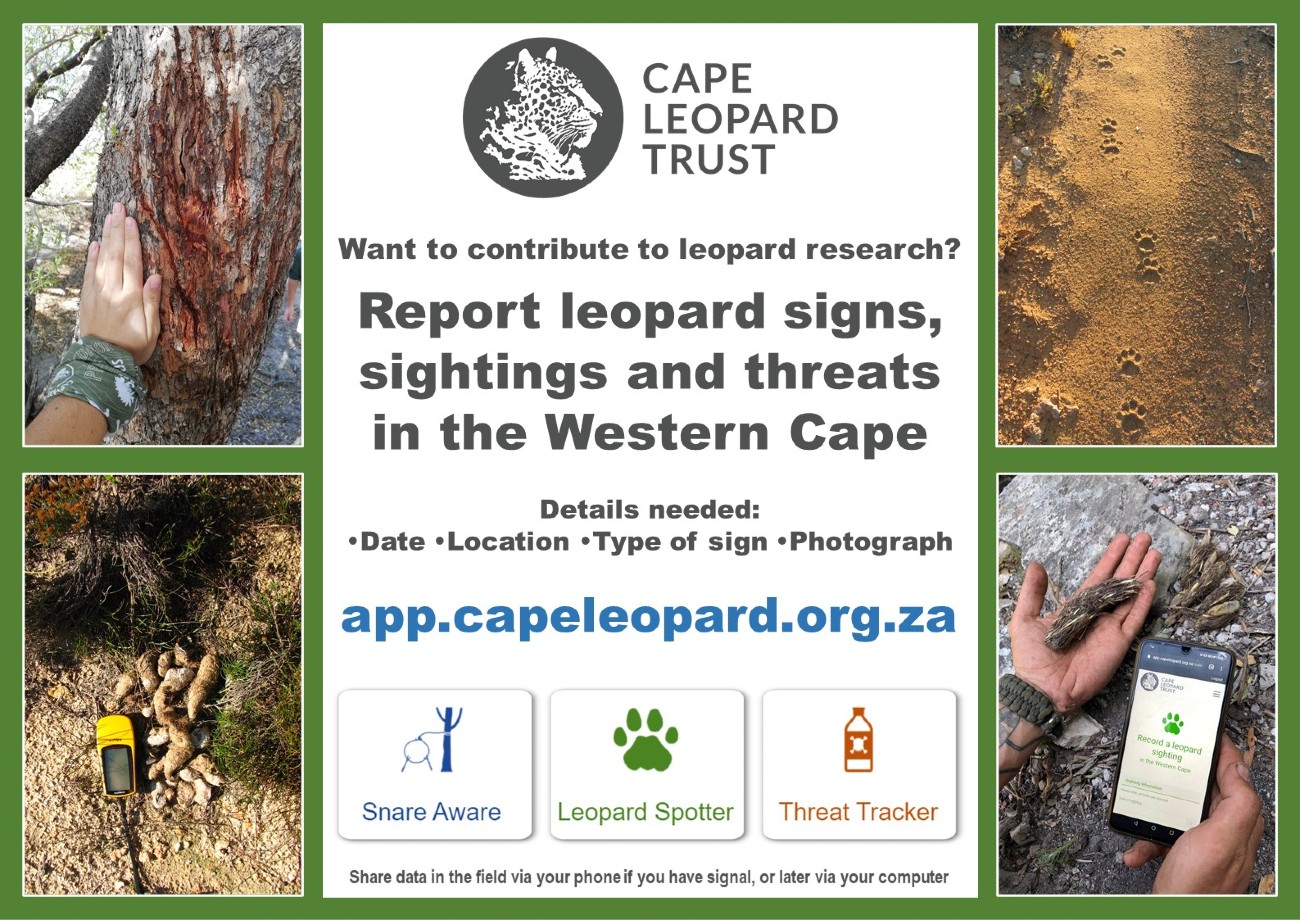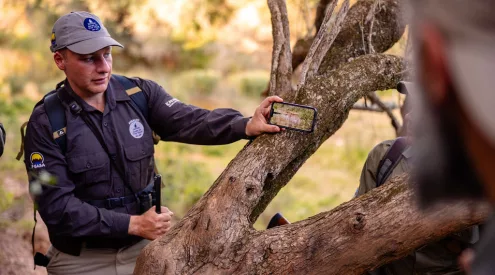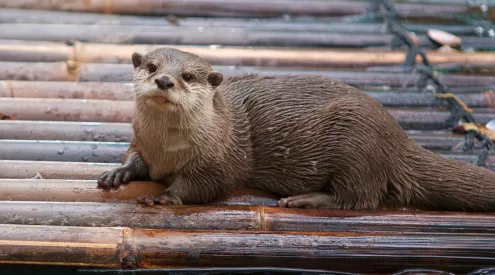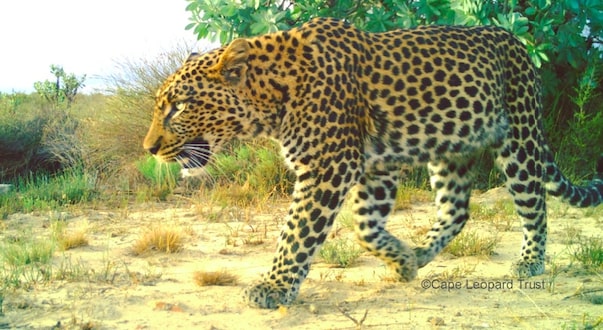The Cape Leopard Trust (CLT) are calling on citizen scientists to contribute to to leopard research in the Western Cape.
The Big Five and other large animals like hyenas and hippopotami once roamed the valleys and plains of the Cape region.
Only the leopard (Panthera pardus pardus) has managed to persist, largely due to its adaptable and versatile nature, and still roams free in the mountainous regions of the province.
However, the species faces multiple threats, including limited and fragmented habitat, reduction in prey numbers and high levels of conflict with people.
The CLT have embarked on a mission to create a consolidated database of leopard distribution and threats to leopards in the Western Cape Province. This database will contribute towards a leopard habitat suitability assessment and identifying ecological corridors for leopards in the region.
Online leopard data portal:
Leopards are nocturnal, solitary animals whose excellent camouflage and secretive nature often means that their presence in an area can go largely undetected.
In a bid to centralise leopard presence data CLT have created an online data portal for citizen scientists to upload their leopard observations and contribute to our database. Within their online ‘Leopard Data Portal’ you can submit your data to one of three purpose-built platforms, namely:
- Leopard Spotter
- Threat Tracker
- Snare Aware
CLT are compiling all verifiable observations of leopards, their signs, and threats to leopards across the Western Cape. They are seeking contributions from 2010 onwards and would like to call on anyone with available data to please upload it to the portal.
They are especially interested in observations outside of protected areas.
Leopard sighting records can consist of camera trap photos, leopard signs (i.e. spoor/tracks, scats/droppings, scratch marks on trees, feeding sites) and direct leopard observations (i.e. visual sightings).
Examples of potential threats to leopards include traps (gin traps or cages), the use of poison, leopard roadkill, and livestock depredation events attributed to leopards.

Examples of submissions. Picture: Cape Leopard Trust
How to submit:
Go to app.capeleopard.org.za and follow the steps to create an account.
Please note that a photo is required to validate submissions. Submitted data is confidential, anonymized, and stored securely. Each data point must be inputted in the app individually, therefore if you have a large quantity of data to share or prefer to contribute via email, please contact [email protected] to request a spreadsheet for submissions.
The data portal is both desktop and mobile friendly. Being a web-based application, it is compatible with various operating systems and you don’t need to download it to your mobile device. Merely save the link to your phone’s home screen and use it as an app.
By being observant in nature and sharing valuable data on leopard signs, threats to leopards, and wire snares, you can contribute to CLT’s scientific research and monitoring projects.
The more people being observant in nature and looking through their data files, the more likely they are to meet their goals.
‘Broad scale research is essential to conserve species that occupy large home ranges such as the leopard. It is extremely challenging for scientists to collect large quantities of data at this scale, but citizen scientists can help. Keep your eyes peeled for signs of this elusive cat and contribute your data to help us conserve leopards in the Western Cape,’ said Dr Kathryn Williams, Research and Conservation Director, Cape Leopard Trust
‘With the largest proportion of available leopard habitat falling on private property across the country, it is vitally important for us to involve private landowners and managers in submitting leopard sightings and threat information and to include them in the longer term in our awareness programmes and conservation actions,’ Anita Wilkinson, Senior Researcher, Cape Leopard Trust.
View this post on Instagram
Picture: Cape Leopard Trust/ Facebook


















